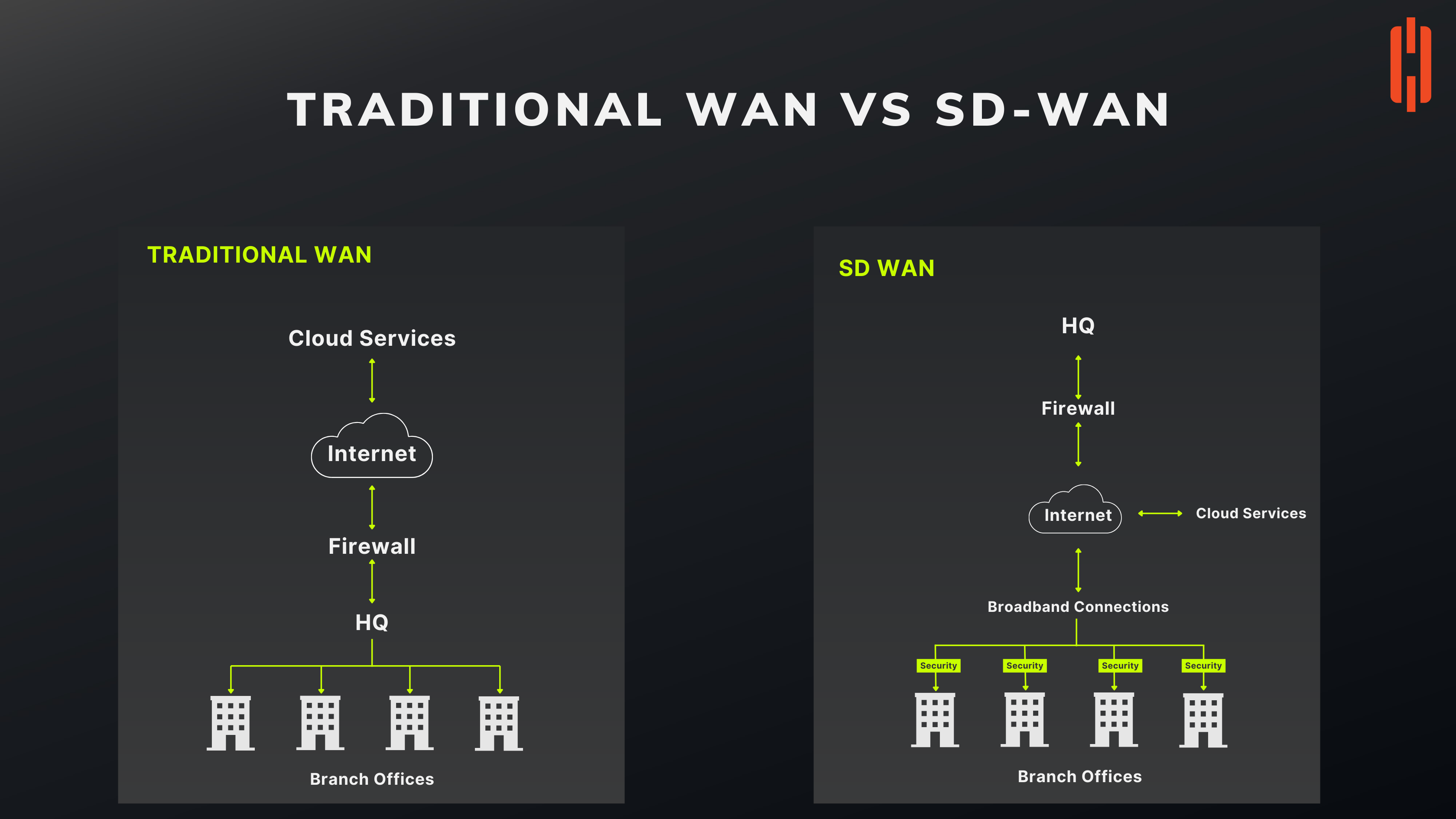The Critical Shift from Traditional WAN to SD-WAN: Navigating the New Age of Networking
As enterprises continue to expand their digital footprint, the need for a robust and adaptable network infrastructure has never been more crucial. The traditional Wide Area Network (WAN) that once served as the backbone of enterprise connectivity is being challenged by the advent of Software-Defined Wide Area Network (SD-WAN). This shift isn't just about keeping pace with technology – it's a fundamental change that addresses the growing demands of cloud computing, security, and management efficiency.
Traditional WAN: The Legacy of Networking
Traditional WANs have been the mainstay of enterprise networks, connecting branch offices to a central corporate network, typically through multiprotocol label switching (MPLS) circuits. The architecture was simple: the internet was accessed through a centralized firewall at the headquarters (HQ), and all branches connected back to the HQ for any and all internet access. This setup, while straightforward, creates a bottleneck as all traffic, irrespective of its destination, is routed through the central HQ's network.
This centralized model made sense in an era where applications and data resided in on-premises data centers. However, with the cloud revolution, this model has become inefficient. Cloud services require direct internet access for optimal performance, and routing traffic through HQ can cause latency, leading to a poor user experience.
SD-WAN: The Future of Enterprise Networking
Enter SD-WAN, a transformational approach to WAN that leverages software-defined networking (SDN) principles to route traffic across the most efficient path. Unlike traditional WAN, SD-WAN utilizes the internet, including broadband connections, to connect branch offices directly to cloud services, bypassing the need to route through HQ. This not only reduces latency but also increases efficiency and reduces costs, as expensive MPLS links can be replaced or augmented with cheaper broadband internet connections.
Security Concerns in the Shift
The graphic suggests a fear that must be addressed: security. With branch offices connecting directly to the internet, the potential attack surface increases significantly. Each branch's connection must be secured, traditionally through local firewalls or, in more modern implementations, through cloud-delivered security services. The shift to SD-WAN must be accompanied by a comprehensive security strategy that ensures the direct internet access points at branches are not vulnerabilities waiting to be exploited.
The Imperative for Change
The move to SD-WAN is not just about keeping up with technological advancements – it's a strategic imperative. Traditional WAN is no longer sufficient for the needs of modern, cloud-dependent businesses. High costs, complexity, and rigidity are catalysts for change. SD-WAN offers not just cost savings but also agility, performance, and scalability – attributes that are essential for businesses to thrive in the digital era.
Preparing for the Transition
The transition from traditional WAN to SD-WAN is not without its challenges. Enterprises must prepare for the shift by ensuring they have the right skills, understanding the implications for their existing network, and developing a phased approach to deployment. It's a journey that requires careful planning and execution.
Embracing SD-WAN for Competitive Advantage
As we look at the horizon of enterprise networking, it's clear that SD-WAN is not just an alternative to traditional WAN – it's the evolutionary path forward. The benefits of improved performance, reduced costs, and enhanced security are compelling. However, with these benefits come new risks and considerations. Enterprises must embrace these changes with a strategy that prioritizes security, reliability, and scalability.
The adoption of SD-WAN is a critical step in ensuring that an enterprise is not only protected but also positioned to capitalize on the benefits of the cloud and digital transformation. Those who hesitate risk being left behind in an era where agility and adaptability are not just advantageous but essential for survival.
